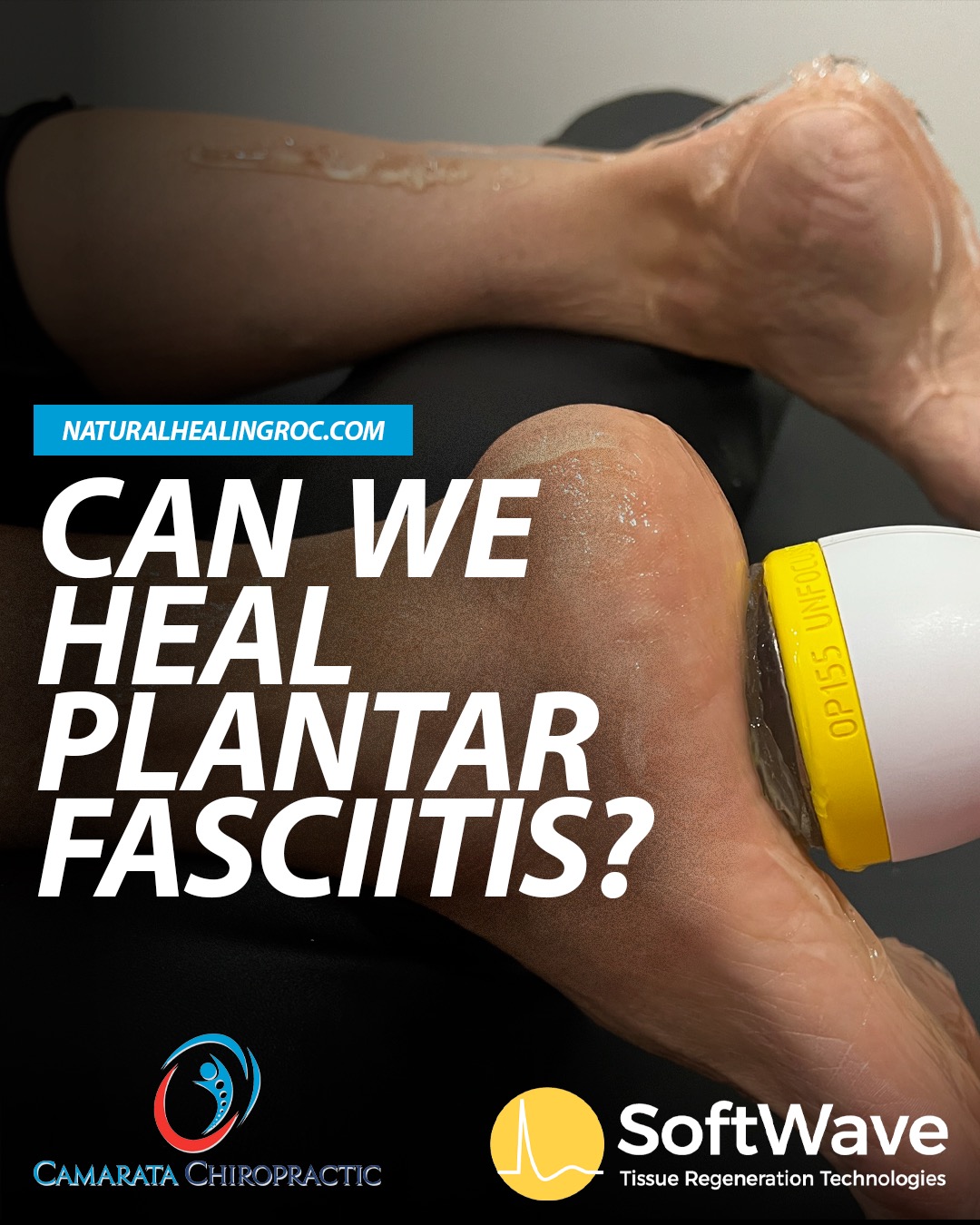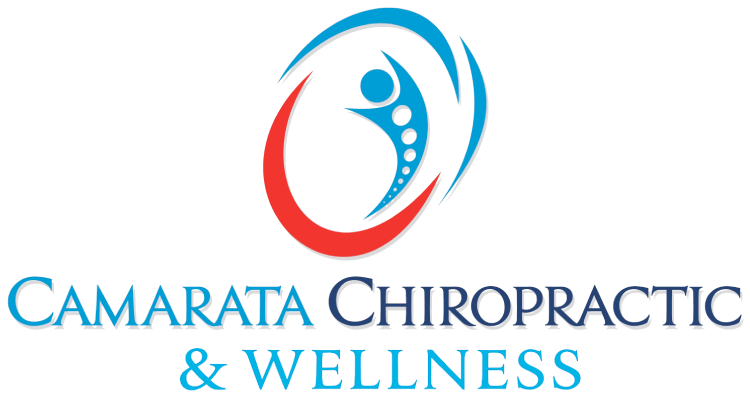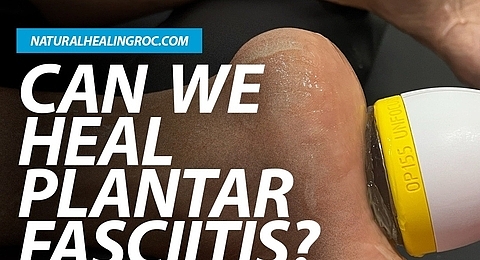Blog
SoftWave for Plantar Fasciitis – Does It Really Work?

If you’ve ever stepped out of bed in the morning and felt a sharp, stabbing pain in your heel, you know how miserable plantar fasciitis can be. For many people in the Rochester, Chili, and Churchville area, that first step of the day brings a reminder that walking, working, or even standing can quickly become a struggle.
Maybe you’ve already tried stretching, ice, anti-inflammatory medications, special shoes, or even cortisone injections. Perhaps you’ve been told to “rest more” or “wait it out.” But what if there was a non-invasive option that actually helped your tissue heal instead of just masking the pain?
That’s what SoftWave Therapy aims to do—and it’s quickly becoming one of the most talked-about options for stubborn plantar fasciitis. In this article, we’ll break down what plantar fasciitis is, how SoftWave works, and whether it really helps people finally get relief from heel pain.
What Is Plantar Fasciitis, Really?
The plantar fascia is a thick band of tissue that runs along the bottom of your foot, from your heel to your toes. Its job is to support your arch and absorb shock every time you walk, run, or jump. When this tissue becomes irritated or overloaded, tiny microtears can develop. Over time, this can lead to inflammation, degeneration, and that classic heel pain you feel near the bottom of the foot—especially with the first steps in the morning or after sitting.
Common risk factors include:
- Standing on hard surfaces for long periods
- Flat feet or very high arches
- Tight calves and Achilles tendon
- Sudden increase in walking, running, or sports
- Improper footwear or worn-out shoes
- Weight gain or repetitive impact
For many people, plantar fasciitis becomes a chronic issue. It can limit exercise, work, and daily life—and can be incredibly stubborn, even with traditional treatment.
Why Traditional Treatments Sometimes Fall Short
Conventional care for plantar fasciitis often includes:
- Rest and activity modification
- Ice and anti-inflammatory medications
- Stretching and physical therapy
- Orthotics or shoe inserts
- Cortisone injections
These approaches can be helpful, and sometimes pain does settle down on its own. But many people find that the relief is inconsistent or temporary. The underlying tissue may still be inflamed, degenerated, or poorly healed—so symptoms keep returning.
That’s where SoftWave Therapy comes in. Instead of just managing pain, it aims to help the plantar fascia actually repair and regenerate.
What Is SoftWave Therapy?
SoftWave Therapy is a non-invasive regenerative treatment that uses electrohydraulic supersonic acoustic waves to stimulate healing in damaged tissues. These waves penetrate deep into the plantar fascia and surrounding structures, helping to:
- Increase blood flow to the area
- Reduce inflammation and swelling
- Stimulate the release and activation of stem cells
- Encourage tissue repair and regeneration
- Break up adhesions and dysfunctional tissue patterns
SoftWave is FDA-cleared for specific indications and used by doctors, chiropractors, and sports medicine providers across the country. In the Rochester and North Chili area, it’s become an increasingly popular option for people who want to avoid injections or surgery for heel and foot pain.
How SoftWave Targets Plantar Fasciitis
In plantar fasciitis, the problem isn’t just inflammation—it’s often chronic microdamage and degeneration in the fascia. SoftWave’s acoustic waves interact with this damaged tissue and trigger a “wake-up call” to your body’s healing systems. The goal is not just to stop the pain, but to help the plantar fascia heal more effectively over time.
During a SoftWave session for plantar fasciitis, the provider moves a handheld device along the bottom of the foot and around the heel. When the waves pass over irritated tissue, you may feel a sharper or more noticeable sensation. This helps the provider pinpoint exactly where the problem areas are and deliver targeted treatment.
Does SoftWave Really Work for Plantar Fasciitis?
No treatment—no matter how advanced—works 100% of the time for 100% of people. But many patients with plantar fasciitis report:
- Reduced pain with standing and walking
- Less intense “first step” pain in the morning
- Improved mobility and function
- Better tolerance for work, exercise, or daily tasks
Some patients feel improvement after just a few sessions; others need a longer series of treatments depending on the severity and how long they’ve been dealing with the issue. Individual results vary, but for many people who have tried stretching, orthotics, or medication without success, SoftWave has been a meaningful next step.
If you’d like to see how people in the Rochester area are responding to SoftWave and other natural therapies, you can read local success stories here:
https://www.naturalhealingroc.com/testimonials
What to Expect at a SoftWave Visit
If you live in or around Churchville, Chili, or Rochester and come in for a SoftWave evaluation, here’s what your experience might look like:
- Consultation: You’ll discuss your pain history, previous treatments, and goals.
- Assessment: The provider will evaluate your foot, gait, and related areas like the calves and ankles.
- SoftWave Mapping: The device is used to “map” sensitized or damaged tissue by scanning the foot and heel.
- Initial Treatment: Acoustic waves are delivered to targeted areas to begin the healing process.
- Plan of Care: Based on your response, you’ll receive a recommended treatment plan tailored to your condition.
The treatment itself is non-invasive and typically lasts only minutes. There’s no surgery, no needles, and no downtime—you can walk out of the office the same day.
Why People in Rochester, Chili & Churchville Are Turning to SoftWave
Patients throughout Western New York are choosing SoftWave for plantar fasciitis because:
- They’ve tried “everything else” with limited success
- They want to avoid injections or surgery if possible
- They like that it is non-invasive and drug-free
- They want a treatment that supports long-term tissue health, not just quick symptom relief
For active individuals who enjoy walking, running, hiking, or sports—or for those whose jobs require them to be on their feet all day—finding a solution that actually supports healing is a big deal.
Is SoftWave Right for You?
SoftWave may be a good fit for you if:
- You’ve been diagnosed with plantar fasciitis or chronic heel pain
- Your pain isn’t improving with stretches, shoe inserts, or rest
- You’re not ready to jump to injections or surgery
- You’re looking for a regenerative, natural-leaning option for pain relief
It’s important to be evaluated to determine if SoftWave is appropriate for your specific condition. In some cases, combining SoftWave Therapy with other approaches—like calf stretching, strengthening, chiropractic care for overall biomechanics, or footwear guidance—can offer the best long-term results.
How to Get Started with SoftWave for Plantar Fasciitis
If you’re tired of hobbling out of bed, limping through your day, or giving up activities you love because of heel pain, it may be time to see if SoftWave Therapy is right for you.
The easiest way to begin is with a SoftWave Discovery Day, where you can meet the provider, have your condition evaluated, experience a mapping and first treatment, and get a clear recommendation for next steps.
During this visit, you’ll have the opportunity to ask questions, feel what the therapy is like, and decide if it’s the right option for you—without committing to a full care plan up front.
Walking Toward Relief—One Step at a Time
Plantar fasciitis can make every step feel like a reminder of what you can’t do. But with the right tools and the right approach, many people are able to get back to walking, working, playing, and living with less pain and more confidence.
If you’re in the Rochester, Chili, or Churchville, NY
Results vary from person to person and no therapy can guarantee a cure, but SoftWave offers a promising, non-invasive option for those seeking real answers—and real healing—for stubborn plantar fasciitis.
‹ Back













